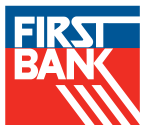Money clichés are a dime a dozen, however, some of those financial catchphrases can truly be applied to your real life and pay off in the long run. One such saying is especially true for business owners. The saying that “cash is king” legitimately represents the importance of liquidity for any business of any size. Cash is needed for everything involved to successfully run your business.
There are many reasons a business can fail, but one of the leading factors is running out of cash. A safety net is imperative to successfully persist through common events like a significant decline in sales, a mainstay customer not paying your invoice, or even being able to maintain seasonality. Every business’s safety net will be different and dependent on the volatility of the business or industry, therefore determining how much cash your business needs.
While liquidity is never a one-size-fits-all solution, all businesses must consider the following key elements:
Proper forecasting will help accurately estimate your costs and reveal how much cash you have been using.
Many businesses can predict the capital needed with standard financial statements and by reviewing historical reports. One of the best ways to calculate your business’s cash needs is to analyze historical spending patterns to sufficiently fund future spending plans. This will also help in assessing what you’re trying to save your cash reserves for, such as funding a gap between your seasonal business cycles.
Forecasting should also be done to measure future cash flow projection. Review your historical financial reports and monthly budgets to adequately predict the next 12-15 months and assess your monthly or quarterly needs and spending. Always conservatively estimate your forecast as results often differ from your business plan, and oftentimes expenses are more predictable than revenue. Remember, the business’s past performance is not always the best predictor of the future.
Upon figuring your future cash needs, you can then estimate how to fund your operating cycle.
With a strong projected financial statement, you can then choose how to grow your reserves and maintain business stability. It is in this stage that your relationship with a bank is essential as you can choose to pay down debt or pay off a revolving line of credit, sell assets you already own, apply for a loan or other line of credit, and more.
Balance is everything.
While liquidity that exceeds your safety net won’t necessarily hurt your business, companies that are flush with excess funds can face some of the same consequences as those that are underfunded. Sometimes businesses with too much cash take on more projects or larger scale projects, over-hire, purchase unmanageable assets, or take larger financial risks that affect projected fixed costs. Upon figuring your future cash needs, you can also consider funding your future growth and capital requirements for the next stage of your business. Your relationship with your financial institution can also help you to protect your cash by investing it in a savings account, a CD, or a variety of sweep accounts meant to safeguard your business and invest your capital. If your company finds itself in the enviable position of having cash beyond its forecasted needs, remember to be conservative and realistic in your spending. Holding considerable amounts of cash is an inefficient use of your capital. Despite ample liquidity, focus on sustainability. Protect your business from economic storms such as a decline in sales, natural disasters, or family emergencies.
How to Plan Ahead.
The best time to seek an arrangement for your cash reserves is before you need it; access to capital will fund growth and scale your business up. It is crucial to take the time to fully know and understand your business and the numbers involved in it. Once you truly understand the numbers behind your operation, you can review and update your business plan, budget, and financial forecasts to glean the need-to-know information regarding the cash reserves needed for your business’ long-term growth.
First Bank is available to help assess your current business needs, long-term goals, and various financing options ensuring a safety net is in place when you need it most. Contact the First Bank team today! No business operates with an eye toward tomorrow quite like a family business. Let’s look forward to success.


